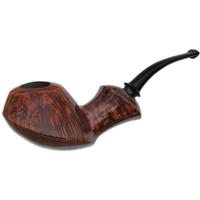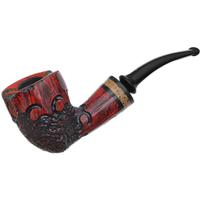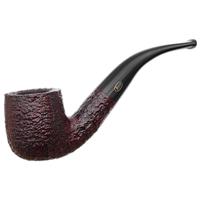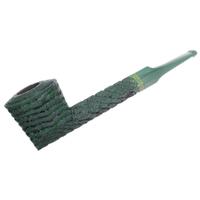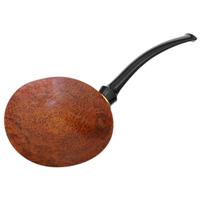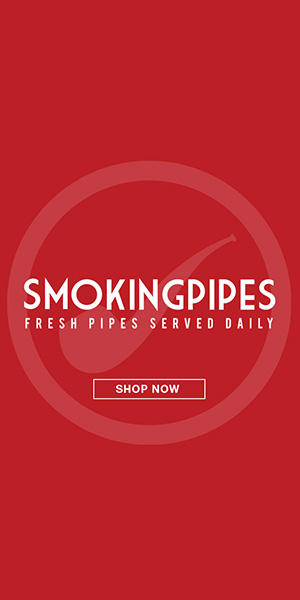was thinking about this today and theres probably a good reason im not aware of. Most vices show some percentage of strength on packaging. Alcohol has ABV, Cannabis shows percentages of THC or CBD, even vape juices can show you the percentage of nicotine. If there a reason why this is not measured in pipe tobacco? would help w picking out blends, no?
Why Can't Blends Have Nicotine Percentages
- Thread starter rdoss16
- Start date
You are using an out of date browser. It may not display this or other websites correctly.
You should upgrade or use an alternative browser.
You should upgrade or use an alternative browser.
- Status
- Not open for further replies.
I don't know.. probably because cigarettes would then have to follow suit?
because there isn't a demand that justifies testing it and also the testing for such things is pretty lame and doesn't actually tell you how much nicotine you'll get. There are so many factors in how much nicotine you'll get from a smoke. Drier actually seems to increase the bio availability of nicotine. So really it's not as much information as it seems like it would be.
Because of the expense of coming up with accurate measurements. Nicotine varies a lot between sourcing and aging, etc. etc.
It wouldn't help me with choosing blends. And do you think that would be free? I can't speak for everyone obviously but I wouldn't want to spend one penny more to know the nicotine content. There are two other issues. Nicotine content isn't the only or likely, the primary factor. How the nicotine is absorbed is significantly impacted by the type of leaf. From my understanding, Virginia tobacco has high nicotine content but due to the chemical makeup, impedes the absorption of nicotine into the system. With that said, what good would it do to know the nicotine content when the actual absorption is the relevant thing? Nicotine content would in fact be misleading.
Please, don't give the regulators any more funny ideas. ?
There are probably multiple reasons, but decades ago, a buddy of mine had a dad that worked for Phillip Morris, and he took us on a tour, where the tobacco was squeezed till all juices were removed from the cigarette tobaccos used in cigarettes, leaving just a cellulose close to sawdust, and then the juices were mixed with all sorts of stuff and added back into the tobacco cellulose, making a new tobacco product that is injected into the cigarette tubes. Thus, they knew the percentages of nicotine, because they had added that much nicotine, along with all sorts of flavors.
Pipe tobacco is a much more natural product, where all sorts of things determine the amount of nicotine that occur naturally, so blends can vary year to year, tobacco to tobacco. It would require testing of every crop used in a blend, and it would be very expensive.
That said, percentages of nicotine in a blend would be moot or unreliable. Virginias actually have a lot of nicotine, but the acidity affects the way the nicotine can be absorbed. So, when we hear that burley has much more nicotine than Virginias, what is really meant is that we can more easily absorb more of the nicotine from burley. Testing it would probably not give us an understanding of how we would actually feel the nicotine.
As a side note, when I visited LaPoche and heard Mark Ryan talk about perique, he mentioned that perique doesn't actually have a lot of nicotine, because the fermentation process reduces the nicotine into more complex molecules. So, smoking straight perique doesn't actually give you a huge nic hit. But, when mixed with other tobaccos, the acidity and more complex molecules make it easier for the pipe smoker to absorb more of the huge amounts of nicotine already present in Virginias that would just pass by without being used by the smoker.
That said, there are probably whole lists of reasons that would go along with these.
Pipe tobacco is a much more natural product, where all sorts of things determine the amount of nicotine that occur naturally, so blends can vary year to year, tobacco to tobacco. It would require testing of every crop used in a blend, and it would be very expensive.
That said, percentages of nicotine in a blend would be moot or unreliable. Virginias actually have a lot of nicotine, but the acidity affects the way the nicotine can be absorbed. So, when we hear that burley has much more nicotine than Virginias, what is really meant is that we can more easily absorb more of the nicotine from burley. Testing it would probably not give us an understanding of how we would actually feel the nicotine.
As a side note, when I visited LaPoche and heard Mark Ryan talk about perique, he mentioned that perique doesn't actually have a lot of nicotine, because the fermentation process reduces the nicotine into more complex molecules. So, smoking straight perique doesn't actually give you a huge nic hit. But, when mixed with other tobaccos, the acidity and more complex molecules make it easier for the pipe smoker to absorb more of the huge amounts of nicotine already present in Virginias that would just pass by without being used by the smoker.
That said, there are probably whole lists of reasons that would go along with these.
Please, don't give the regulators any more funny ideas. ?
Ain’t that the truth!
Surgeon General warns of tobacco.
Black Frigate surgeon prescribes it!
BTW, you can get an idea of how strong a blend is by checking tobaccoreviews.com, and looking at how members have rated the strength. Also both pipesandcigars and smokingpipes has the strength listed on most blends they sell.
I would imagine, when all is said and done, that this will probably be a requirement mandated by the FDA and then you will get your wish.
Of course it will come with the oversight and regulations as well as the salaries and budget for the FDA's subsidiary:
The Pipe Tobacco Regulation Department.......
You get the idea......
Of course it will come with the oversight and regulations as well as the salaries and budget for the FDA's subsidiary:
The Pipe Tobacco Regulation Department.......
You get the idea......
not my wish by any means, simply curious and wanted to put the question in front of the forum.I would imagine, when all is said and done, that this will probably be a requirement mandated by the FDA and then you will get your wish.
Actually, I see this day coming. It just depends on which PAC wins out.
After all, It's "for the kids", you know.
After all, It's "for the kids", you know.
Don't forget that the whole FDA thing was started by the cigarette industry. They did this to chewing tobacco too, and then when the small chewing tobacco industry couldn't afford to do all of the testing, the cigarette industry bought out the chewing tobacco companies. Look at the company name on the packs. They are all Phillip Morris now. And, we now have Camel branded dips and chews.
My horror is that Phillip Morris takes over most of the pipe tobacco companies and we start having Camel VaPers and Camel Virginias.
My horror is that Phillip Morris takes over most of the pipe tobacco companies and we start having Camel VaPers and Camel Virginias.
I would much rather see the percentages of the component leaf varieties listed on the tin (voluntarily).
Aside from cost, lack of demand, and the other great reasons stated, that inconsistence in levels would make it nearly impossible. I would imagine that the natural variations from crop to crop along with the processing methods, casings, etc, then the blending itself would result in a variation akin to trying to label apples with fructose levels on a per apple basis. There are so many variables as they are really minimally processed as compared to cigarettes, as Cosmic cited.
Tobaccoreviews pretty much covers that base as far as I'm concerned.
It'd be the only useful thing the FDA might require. Component tobaccos could also be useful, listed in order of percentage in the blend. Then we could make our own....
It'd be the only useful thing the FDA might require. Component tobaccos could also be useful, listed in order of percentage in the blend. Then we could make our own....
This is exactly the sort of thing I worry about. Well intentioned, surely, but think of the incentives and consequences it sets up: commercial tobacco made more expensive due to testing, and incentivizing people to make their own.
Add those two incentives together and we get fewer and more expensive commercial tobacco blends.
Personally, I’d rather have pipe tobacco be a lucrative prospect for companies, so they invest in it.
I would much rather see the percentages of the component leaf varieties listed on the tin (voluntarily).
= Trade secrets...

Would it really be that expensive, though? I'm seriously asking, because I don't know. Swedish Snus manufacturers do this. Your average cannabis shop displays THC/CBD percentages for their strains, even the smallest microbreweries display the ABVs for their beers. I am generally in favor of consumers having as much information as possible, and think it would be a good idea if feasible. TR.com can only help you so much as people don't seem to have much agreement in terms of what they're referring to when rating a blend's "Strength."
- Status
- Not open for further replies.



